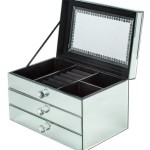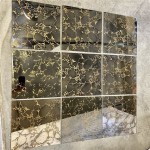How To Fix a Front Mirror in a Car
A properly attached rearview mirror is crucial for safe driving. It provides a clear view of the traffic behind, enabling safe lane changes and overall situational awareness. A loose or detached mirror compromises this visibility and poses a safety risk. Fortunately, fixing a front mirror, also known as a rearview mirror, is often a straightforward task that can be completed with readily available tools and materials.
1. Assessing the Damage
Before attempting any repairs, it's essential to assess the extent of the damage. Determine whether the mirror itself is broken, the mirror mount is damaged, or if the adhesive has simply failed. This initial assessment will guide the necessary repair steps. If the mirror is cracked or broken, replacement is usually the best option. For issues with the mount or adhesive, repairs are often possible.
2. Gathering Necessary Materials
Depending on the type of damage, various materials might be required. For reattaching the mirror, a rearview mirror adhesive specifically designed for automotive use is recommended. This type of adhesive is formulated to withstand the temperature fluctuations and vibrations experienced within a vehicle's cabin. Additional materials might include a cleaning solution, such as isopropyl alcohol, a razor blade for removing old adhesive, and a primer to promote adhesion.
3. Preparing the Mounting Surface
Proper surface preparation is critical for achieving a strong and lasting bond. Begin by thoroughly cleaning the mounting surface on the windshield. Use isopropyl alcohol to remove any dirt, grease, or residue from old adhesive. A clean surface ensures optimal contact between the adhesive and the windshield. If there is any remaining adhesive from the previous mirror, carefully remove it using a razor blade. Take care not to scratch the windshield during this process. A smooth, clean surface is essential for a secure bond.
4. Applying the Adhesive
Follow the manufacturer's instructions on the adhesive packaging carefully. Typically, the adhesive is applied directly to the mounting button on the back of the rearview mirror bracket. Ensure an even distribution of the adhesive to maximize contact with the windshield. Some adhesives require a specific curing time before attaching the mirror. Allow the adhesive to set for the recommended duration before proceeding to the next step.
5. Attaching the Mirror
Once the adhesive is ready, carefully position the mirror bracket onto the cleaned mounting spot on the windshield. Apply firm, even pressure for the duration specified by the adhesive manufacturer. This ensures a secure bond and prevents the mirror from detaching prematurely. Avoid excessive pressure, which could damage the windshield or the mirror mount.
6. Curing Time
Allow the adhesive to cure completely before adjusting or using the mirror. The curing time varies depending on the specific adhesive used and the ambient temperature. Consult the adhesive manufacturer's instructions for the recommended curing time. Avoid driving the vehicle during the curing process to prevent vibrations from disrupting the bond.
7. Special Considerations for Clip-On Mirrors
Some vehicles utilize a clip-on style rearview mirror. These mirrors attach to the existing mirror mount using a spring-loaded clip. If a clip-on mirror becomes loose or detached, inspect the clip mechanism for damage. If the clip is broken, the entire mirror assembly might need replacement. If the clip is intact, ensure it is properly engaged with the mount. A firm snap indicates a secure connection.
8. Replacing a Damaged Mirror
If the mirror itself is cracked or broken, replacement is the safest option. Replacement mirrors are typically available from auto parts stores. Match the replacement mirror to the vehicle's make and model to ensure compatibility. Follow the instructions provided with the replacement mirror for installation. These instructions will typically outline the removal of the old mirror and the attachment of the new one. If uncomfortable with the replacement process, consult a qualified automotive technician.
9. Professional Assistance
While fixing a rearview mirror is often a DIY task, seeking professional assistance is a viable option. A qualified automotive technician possesses the expertise and tools to address more complex mirror issues. They can also diagnose any underlying problems with the mounting surface or the mirror assembly itself. If unsure about any aspect of the repair process, consulting a professional is always recommended.

How To Adjust Car Mirrors 10 Steps With Pictures Wikihow

How To Adjust Your Mirrors Avoid Blind Spots

How To Adjust Car Mirrors 10 Steps With Pictures Wikihow

How To Save Money Reglue And Reattach Your Own Rearview Mirror

How To Adjust Car Mirrors 10 Steps With Pictures Wikihow

How To Adjust Car Mirrors 10 Steps With Pictures Wikihow

This Is How You Adjust And Use Your Mirrors Properly To Have Clear Visibility Driving Academy Tests Org

How To Replace Rearview Mirror Glass Doctor

How To Save Money Reglue And Reattach Your Own Rearview Mirror

How To Adjust Car Mirrors In Three Steps Carwale








